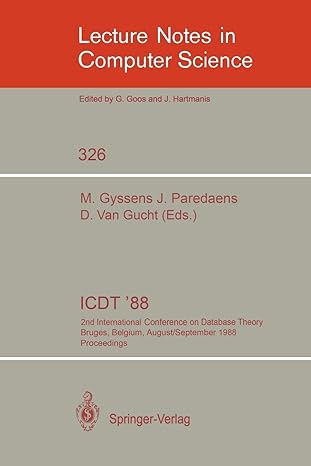Question
Answer the questions with the MATLAB code Provided. will rate you! Enter the following into the MATLAB editor. We will compare AM and FM techniques
Answer the questions with the MATLAB code Provided. will rate you!
Enter the following into the MATLAB editor. We will compare AM and FM techniques
%AM Modulation;
clear;
Ac=5;
Am=5;
fc=10000;
fm=500;
t=0:0.00001:0.003;
m=Am*cos(2*pi*fm*t);
c=Ac*cos(2*pi*fc*t);
mi = Am/Ac;
s=Ac*(1+mi*cos(2*pi*fm*t)).*cos(2*pi*fc*t);
subplot(2,2,1);
plot(t,s);
xlabel('time');
ylabel('amplitude');
title('AM modulation');
subplot(2,2,4);
yyaxis left;
plot(t,m);
yyaxis right;
plot(t,s);
title('combined message and AM signal');
xlabel('time');
ylabel('amplitude');
%FM
kvco=1000;
beta=(kvco*Am)/fm;
sFM=Ac*cos((2*pi*fc*t)+beta*sin(2*pi*fm*t));
subplot(2,2,2);
plot(t,sFM);
xlabel('time');
ylabel('amplitude');
title('FM modulation');
%combined FM and m(t) plot
subplot(2,2,3);
yyaxis left;
plot(t,m);
ylim([-8 9])
yyaxis right;
plot(t,sFM);
ylim([-8 9])
title('combined message and FM signal');
xlabel('time');
ylabel('amplitude');
3
Question 3.1 Select the correct statement regarding the difference between the FM
modulated signal waveform and the AM modulated signal waveform.
a. The FM signal wave changes frequency according to the message wave m(t). The "peak"
amplitude of the FM signal, Ac=5, remains constant.
b. There is no difference between the FM and AM signal waves because they are both
modulated by the same message wave, m(t) = Amcos(2fmt)
c. The AM signal wave frequency changes with the message wave m(t) while the amplitude of
the FM signal changes with m(t).
d. All statements are correct.
.
Question 3.2 By observing the combined AM and FM plots, we see that both AM and FM
signals appear to represent the original message signal.
a. True
b. False
Step 3.3 Change the message amplitude Am=2, carrier amplitude Ac=8, and plot.
Question 3.3 Select the statement that best describes the resultant wave forms.
a. The AM signal appears to faithfully represent the message m(t).
b. The FM index is small, and it is difficult to see FM frequency changes.
c. The FM signal sFM(t) amplitude does not change, which is to be expected since carrier
amplitude does not represent the message m(t).
d. All statements is correct.
Step 3.4 Change the message amplitude m(t) to 8, and Kvco to 10 (Hz/v), and answer the
following questions.
Question 3.4 Select the statement that best describes your observation.
a. The FM modulated carrier signal appears to faithfully represent the message m(t)
b. Kvco is much smaller, and as a result the FM Index is very small. Changes in the FM signal
are difficult to see.
c. Changes in Kvco results in FM signal amplitude changes.
d. All of the statements are correct
Step 4.1 Enter the following into the MATLAB editor. We will compare AM, FM and PM
techniques.
%AM Modulation;
clear;
Ac=5;
Am=5;
fc=10000;
fm=1000;
t=0:0.00001:0.003;
m=Am*cos(2*pi*fm*t);
c=Ac*cos(2*pi*fc*t);
mi = Am/Ac;
s=Ac*(1+mi*cos(2*pi*fm*t)).*cos(2*pi*fc*t);
subplot(2,2,1);
plot(t,s);
xlabel('time');
ylabel('amplitude');
title('AM modulation');
subplot(2,2,2);
plot(t,m);
xlabel('time');
ylabel('amplitude');
title('Message');
%FM
kvco=1000;
beta=(kvco*Am)/fm;
sFM=Ac*cos((2*pi*fc*t)+beta*sin(2*pi*fm*t));
subplot(2,2,4);
yyaxis left;
plot(t,m);
ylim([-12 12])
yyaxis right;
plot(t,sFM);
ylim([-12 12])
title('combined message and FM signal');
xlabel('time');
ylabel('amplitude');
%PM
kp=0.8;
t=0:0.000001:0.002;
m=Am*cos(2*pi*fm*t);
mp=kp*Am;
6
sPM=Ac*cos((2*pi*fc*t)+mp*cos(2*pi*fm*t));
subplot(2,2,3);
yyaxis left;
plot(t,m);
ylim([-12 12])
yyaxis right;
plot(t,sPM);
ylim([-12 12])
title('combined message and PM signal');
xlabel('time');
ylabel('amplitude');
Step 4.2 Select the "Run" icon. Another window should open showing graphical plots for the
modulated carrier wave or signal, and the message or modulating wave.
Question 4.2 Select the statement that best describes the PM wave.
a. The PM signal clearly does not change phases with the message wave. In this case, the PM
signal will not be received.
b. The PM signal appears to change frequency with the message wave since both PM and FM
are considered angular modulation techniques. However, the message in a PM wave is only
captured in phase changes vice frequency changes.
c. Since both PM and FM signals are considered angular modulation techniques, PM can be
demodulated using FM demodulation techniques.
d. All statements are correct.
Step 4.3 Now change kp to /200.
Question 4.3 What is your observation?
a. The PM signal can still be received since kp does not influence the PM index.
b. kp is too high, therefore PM modulation will overlap sampling times and the message will be
lost.
c. kp is very small, therefore the PM index is very small, and changes in the message wave will
be difficult to detect in the PM signal. This will require a highly sensitive receiver capable of
detecting small phase changes.
d. All statements are incorrect.
Step by Step Solution
There are 3 Steps involved in it
Step: 1

Get Instant Access to Expert-Tailored Solutions
See step-by-step solutions with expert insights and AI powered tools for academic success
Step: 2

Step: 3

Ace Your Homework with AI
Get the answers you need in no time with our AI-driven, step-by-step assistance
Get Started


